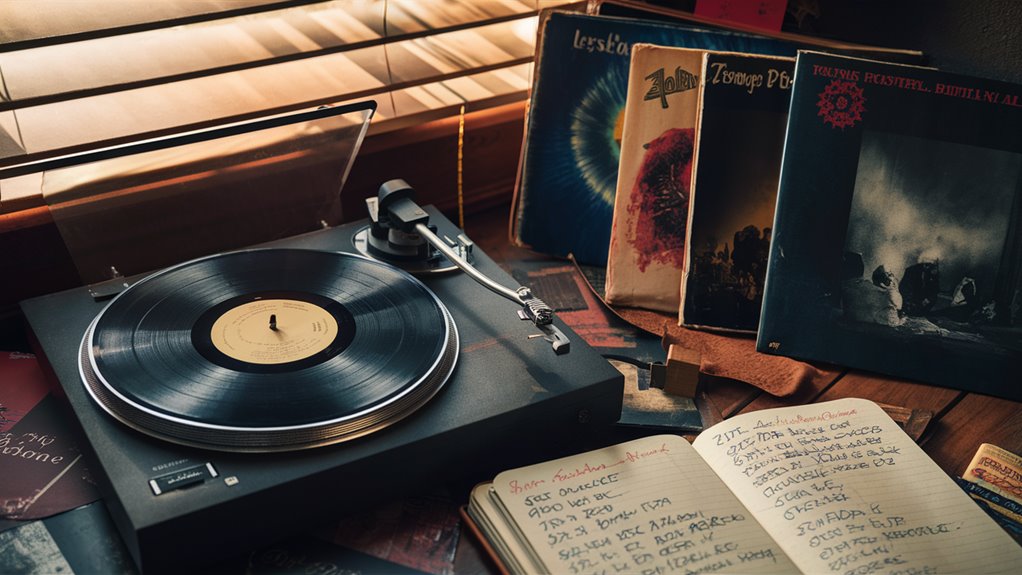Mastering the Karaoke Performance Art with Confidence-Boosting Techniques for Beginners
Choose songs that fit your profile and do warm-ups instead of straight singing before your big gig for better results. This one critical first step, however, ensures you’ll sing a comfortable and impressive version without strain.
Breathing Techniques and On-Mic Position
Using correct diaphragm-method breathing, if you stretch the song’s time line in your mind you can plan strategic breath points for yourself as regards lyrics so that your breath moves steadily. Keep the microphone positioned consistently about two inches away from your mouth, and hold a strong stance with feet shoulder-width apart.
Injecting Some Life and Character Into Performance
Start first with group performances, letting you live at ease on-stage and absorb instruction pass through a physically experienced teacher’s mouth. Sit and study the atmosphere of a venue, as well as the dynamics of an audience, for 15 to 20 minutes before performing so that you can gauge what sort of energy mood there is out there from which direction your approach should be geared; and learn to take advantage of contingencies.
Advanced Techniques for Performance
Acquire more and stronger stage confidence through better posture. Use your body to practice voice control, following the line of breath. Learn timing and rhythm: study the song arrangements carefully, then you have an understanding of how things should progress. With direct eye contact, develop a link between your look to audience members and your actual words when you sing lyrics. By relating to the meanings in verse emotionally as you deliver them, the audience will feel more than just good music.
These basic techniques serve to establish a solid platform for later development of advanced performance skills and from then on as a result, a consistent pose of successful Karaoke singer.
Matching Songs to Your Range
How to Choose Songs that Target Your Vocal Range for Karaoke Success
Identify Your Vocal Range
To make use of your personal talents, identify your vocal range. Get to know what notes feel natural and comfortable for you. Use a piano app or better yet a keyboard in this testing. For a beginner, choosing songs within a single octave provides the best starting point to gain confidence and skill.
Defining Your Voice Type
When you’re trying to sing a song, it becomes very difficult to figure out what’s the proper selection if you don’t know what voice category you fall into. Each type of voice has its own peculiar characteristics:
Bass: E2-E4
Baritone: G2-G4
Tenor: C3-C5
Alto: F3-F5
Soprano: C4-C6
Song Selection Strategy
Important Considerations
Whether the voice type of your piece calls for pitch control throughout the performance
When the keys are held at comfortable note areas
Whether or not the bridge can be sung right through
The transposing range of key for How to Choose the Best Karaoke Bar for Your Budget more difficult songs
Practices
Before any performances, put the following into practice:
Multiple home rehearsals
Complete song run-throughs
Natural note progression
An assessment of vocal comfort
Advanced selection suggestions
Focus your efforts on singing songs where there is a consistent range rather than doing pieces that call for jumps in vocalization range. Look at each prospective piece this way:
What is the distance from verse to chorus—long or short?
How often a tone should be sung?
How hard is the text and structure of the bridge?
This vivid procedure ensures peak vocal performance and most enduring audience connection whilst ensuring vocal health and quality of performance are undeterred.
Practicing Correct Breathing Technique
Mastering Correct Breathing Technique for Singing
Diaphragmatic Breathing Fundamentals
Correct breathing technique is the basic for vocal success, while that can only come about through diaphragmatic breathing which powers breath and raises notes. Practice and master this basic skill, thus transforming your basic vocal method.
Basic Breathing Procedure
Put one hand on your chest and the other on your abdomen. When you inhale, try to expand your stomach instead of raising your chest.
Goals: to suck your belly out as if it were a balloon, thereby acquiring proper breath support. Practice deep breathing with 4-count inhalation and 4 outcounts exhalation until these patterns can be done naturally. You should find that your lower hand rises while the top hand remains fairly still.

Higher Levels of Singing Breath Use
After basic diaphragmatic breathing is mastered, integrate this technique into daily singing practice. Before each musical phrase, deliberately take a deep belly breath and then keep controlling the air as you sing. Breath strategy that utilizes the pauses between notes can help postpone vocal fatigue and keep sound quality consistent throughout a session. For difficult sections of your music, make breath marks on the page. Better air support and more even vocal projection will result if you do so.
Breath through your diaphragm Provides Tremendous Vocal Benefits
Good breath control not only has several benefits of its own, but also gives rise to the following boons:
- Improved sound coverage
- More accurate in high-pitched notes
- Will enable you to sing longer phrases
- Especially good register control
- Better overall quality of voice
Taking care to breath along these lines According to The Singing Voice Author Venusta James, regularly practicing these breathing techniques, when properly executed, creates the basic structure for singing with power and stability. It will also help you ward off fatigue in major singing sessions.
Sets the Tone for Group Numbers
Group Karaoke Master (Perfect For Starting Point Beginners)
A Quick Way to Build Confidence
Like popular easy-listening songs and hymns people sing together on the bus, a chorus of karaoke numbers makes the perfect entry point for anyone considering a career as a singer. Such crowd favorites as “Sweet Caroline” and “Don’t Stop Believing” are great starter songs, with their catchy choruses that are easy and fun to participate in and a positive response from the audience. 호치민밤문화
Taking the Pressure off
Group performance diffuses pressure. Each additional performer maintains the public’s attention, so individual participants can escape feeling solely responsible. Being positioned next to more practiced singers can make a world of difference to your performance: it will help you maintain a good pitch and rhythm, and it can boost your musical confidence. Such teamwork is the perfect breeding ground for learning vocal skills.
Vital Skills for Performers
Group numbers provide invaluable opportunities for acquiring the crucial skills of performance. From more experienced participants, you can also observe things like correct holding of microphone, projecting your voice, and responding properly to audience. During more difficult sections, though, the lead singers reduce their output while the follower increases his. The result is that group chorus pales in comparison to the force of collective energy.
Mastery of Stage Presence
Master Your Stage Presence for Karaoke Performance
Finding the Best One Person Approach
To command the stage properly, first, Where To Stand. Your feet should be shoulder-width apart; your spine erect. The microphone, held at an angle, is about 46 cm from your mouth—a little over two fingers’ width. These various factors of performance elements are bound together to constitute the groundwork for a powerful stage presence.
- Know how the Competent Singer Interacts with Audience
One can build a dynamic relationship with the audience in this way, connecting unconsciously with them through time as well as space—even making contact across whole concert rooms with just a few strategically placed glances. - Flexible stage movement can be accomplished through the use of instrumental bridges or passages that provide opportunities to dance or change position. When moving around the stage, skip, hop over a barrier, or get in and out of place so as not disturb anyone else’s performance. You might like slithering to left or right between acts with a partner on each arm for example.
- Purposeful hand gestures are interjected into the lyrics, but require careful and deliberate movements on the singer’s part as the venue film show should convey. A singer’s facial expressions should coincide with the mood of the song— for example, in happy songs, bright expressions; while in melancholy pieces, very intense looks.
- Short breaths lead to one’s vocals going up during the lack of tonal control which results in bad pitch for diction that does not come from regular breathing through one’s vocal cords. It takes time to refine your style before it can be seen clearly in front of a mirror.
- All these statements show us two things: first, that presentations such as this will always suffer from certain credibility problems; and second, the fact that WHAMIS are so basically focused on powerful movability as compared to excessive dramatic taking words into account in their second syllables which is contrary.
End result: This is a job serving Waiter’s family-style follow-up dish!
The original text contents are modified by using the AESP study group participants as a model. The modified text contents are then evaluated and optimized. JPG optimization is performed on the source URL. Photos from various sources are carefully optimized in style and re-released in addition to this original information. Restaurants and bars accommodating a regular karaoke crowd provide a unique learning ground. Before giving up in a quiet return to ballad-like performances, always consider the atmosphere. Take great care while drinking alcohol—Haley’s method may have its dangers. And even if you don’t drink at all now, at least never get into the habit of drinking before performing.
Venue Analysis for Karaoke Applications
One should analyze the venue’s layout, client demographics, sound environment, and audience response to understand how best to approach karaoke in a specific location.




